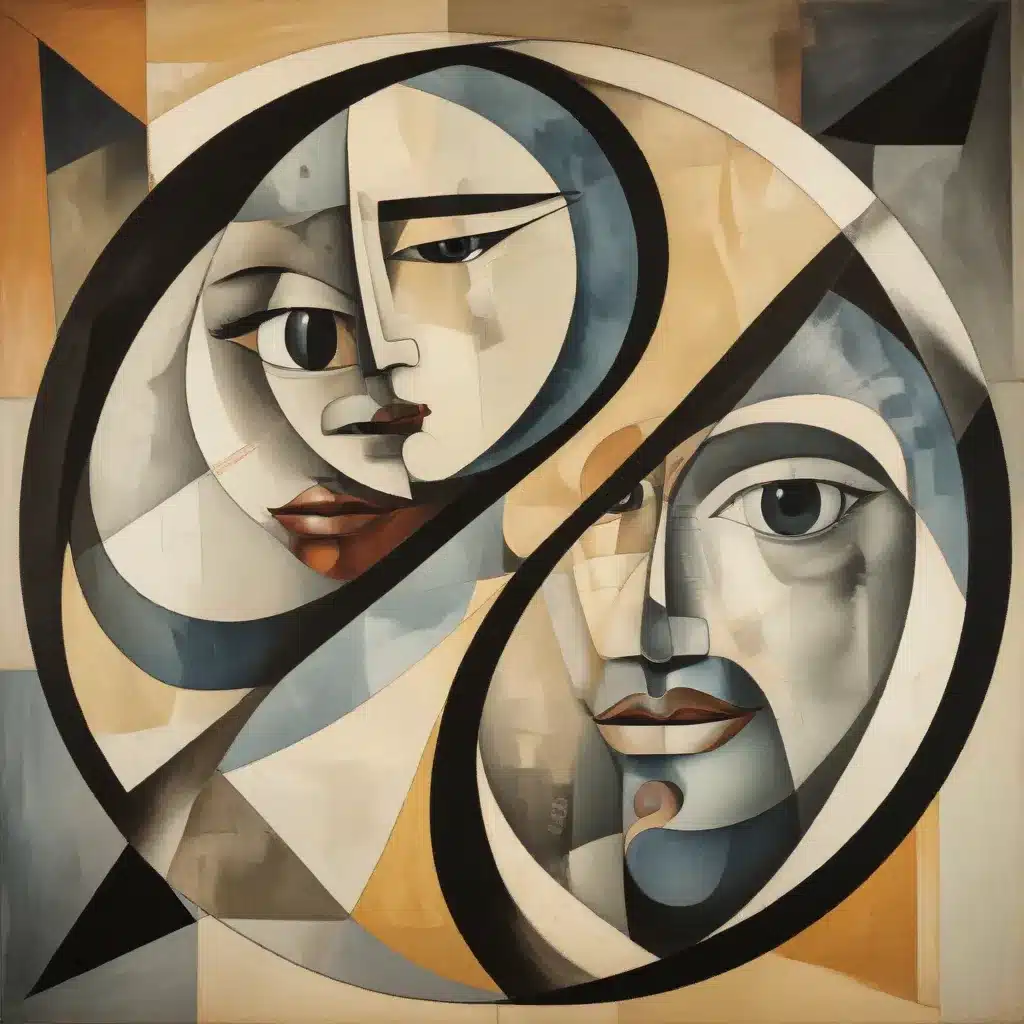
The Cubist Revolution: Breaking Free from Tradition
The dawn of the 20th century witnessed an artistic revolution that forever altered the landscape of visual expression. At the forefront of this seismic shift stood the Cubist movement, spearheaded by the visionary talents of Pablo Picasso and Georges Braque. Cubism, with its fragmented forms and multifaceted perspectives, challenged the long-held conventions of representational art, ushering in a new era of abstraction and experimental composition.
As Cubist artists deconstructed the world around them, they uncovered a deeper truth – that reality is not a static, singular perspective but a dynamic interplay of intersecting planes and shifting viewpoints. This revolutionary approach to perception sparked a ripple effect that extended far beyond the canvas, influencing not only the visual arts but also the realms of music, architecture, and even philosophy.
Piet Mondrian and the Pursuit of Neo-Plasticism
Amidst the Cubist ferment, a Dutch artist named Piet Mondrian emerged as a pivotal figure, his own artistic journey mirroring the transformative impact of the Cubist revolution. Drawn to the underlying geometric principles and harmonious interplay of form and color in Cubist compositions, Mondrian embarked on a quest to distill these elements to their purest essence, ultimately giving birth to his groundbreaking Neo-Plastic style.
Mondrian’s meticulous paintings, characterized by their stark black lines, primary colors, and precisely balanced rectangular planes, embodied his belief in the universal language of abstraction. By reducing his visual vocabulary to the most fundamental components – line, plane, and color – Mondrian sought to transcend the limitations of individual expression and tap into a realm of universal, spiritual harmony.
Harmonizing Opposites: The Yin and Yang of Cubist Composition
At the heart of Mondrian’s Neo-Plasticism lay a profound appreciation for the yin and yang of Cubist composition – the dynamic tension created by the interplay of opposing forces. Embracing the Cubists’ fragmentation of form and the disruption of traditional perspective, Mondrian sought to harness these elements to achieve a delicate balance, a harmonious coexistence of seemingly disparate elements.
In his paintings, Mondrian meticulously orchestrated the interplay between horizontal and vertical lines, between positive and negative space, and between primary colors and their absence. This careful choreography of opposites, this dance of light and shadow, form and void, imbued his work with a palpable sense of energy and dynamism, challenging the viewer to engage with the work on a deeper, almost transcendent level.
The Transformative Impact of Cubist Composition
The influence of Cubist composition, as seen through the lens of Mondrian’s Neo-Plasticism, extended far beyond the visual arts. As artists and thinkers grappled with the seismic shifts in perception and the dissolution of traditional forms, the principles of Cubism and Neo-Plasticism found resonance in a wide range of disciplines.
In music, composers like Eric Satie and Arnold Schoenberg experimented with the deconstruction of traditional harmony, embracing dissonance and atonality to create a new musical language that mirrored the fractured perspectives of Cubism. Architects, too, were inspired by the Cubist ethos, as evidenced in the bold, angular forms of the Bauhaus movement and the stripped-down aesthetic of modernist design.
Even in the realm of philosophy, the Cubist and Neo-Plastic emphasis on the coexistence of opposing forces found echoes in the writings of thinkers like Carl Jung, who explored the concept of the collective unconscious and the harmonization of dualities. This cross-pollination of ideas and the shared impulse to challenge the status quo underscored the transformative power of Cubist composition, its ripples felt across the cultural landscape.
Harmonizing Opposites in the Digital Age
As we navigate the ever-evolving landscape of the digital age, the principles of Cubist composition and Neo-Plasticism continue to resonate, offering a template for navigating the complexities of contemporary life. In a world increasingly defined by the simultaneous coexistence of disparate realities, the harmonization of opposites becomes a vital skill, allowing us to embrace the inherent contradictions and find unity amidst the chaos.
Just as Mondrian’s paintings seamlessly integrated the interplay of line and plane, positive and negative space, the digital realm presents us with a similar challenge: to cultivate a harmonious synthesis of the virtual and the physical, the global and the local, the individual and the collective. By embracing the yin and yang of our digital landscape, we can unlock new avenues for creative expression, fostering a deeper understanding of the world around us and our place within it.
Conclusion: The Enduring Legacy of Cubist Composition
The Cubist revolution, as exemplified by the groundbreaking work of Piet Mondrian and his Neo-Plastic vision, stands as a testament to the transformative power of art. By shattering the constraints of traditional representation and embracing the dynamic interplay of opposing forces, Cubist artists opened up new realms of perception, inspiring generations of creators and thinkers to challenge the status quo and seek a deeper, more holistic understanding of the world around them.
In an era defined by rapid technological advancement and the blurring of boundaries, the harmonious duality at the heart of Cubist composition remains a guiding principle, inviting us to navigate the complexities of the modern world with a renewed sense of balance, resilience, and creative vision. As we continue to explore the frontiers of human expression, the legacy of Cubism and Neo-Plasticism stands as a beacon, reminding us of the transformative power of art to shape our perceptions and forge a more harmonious future.